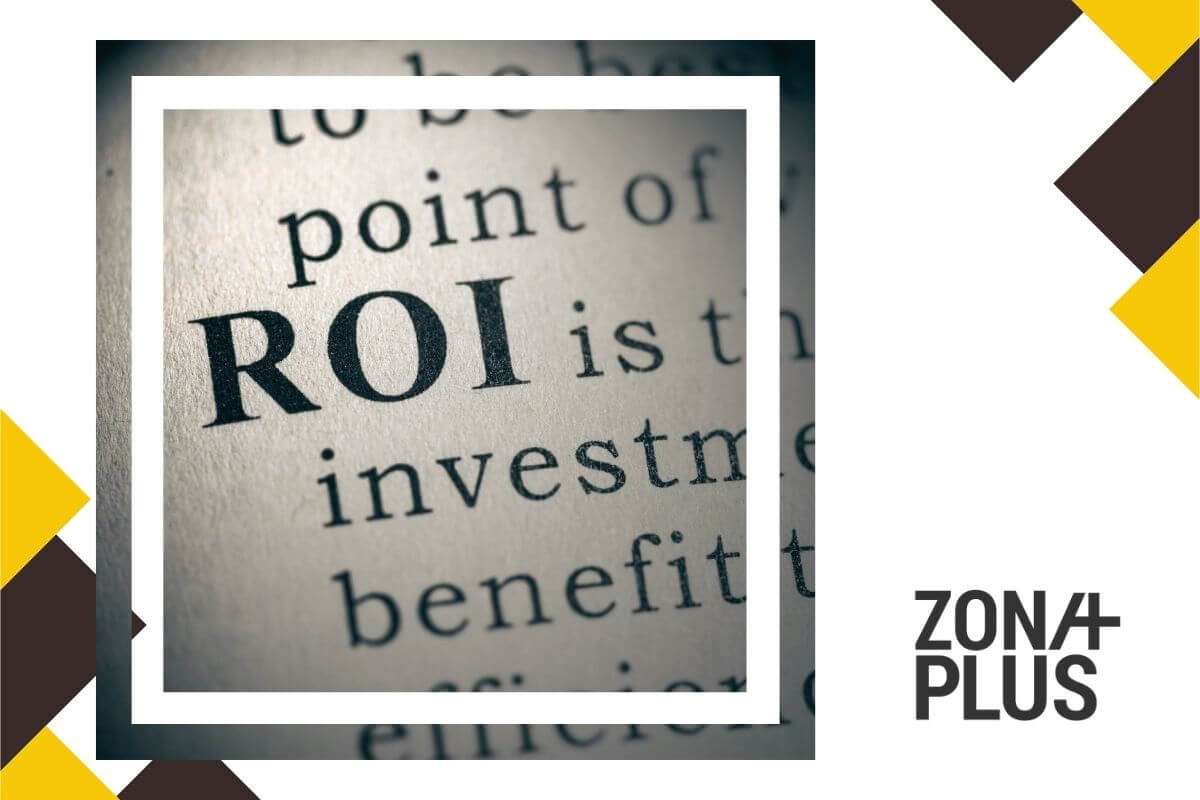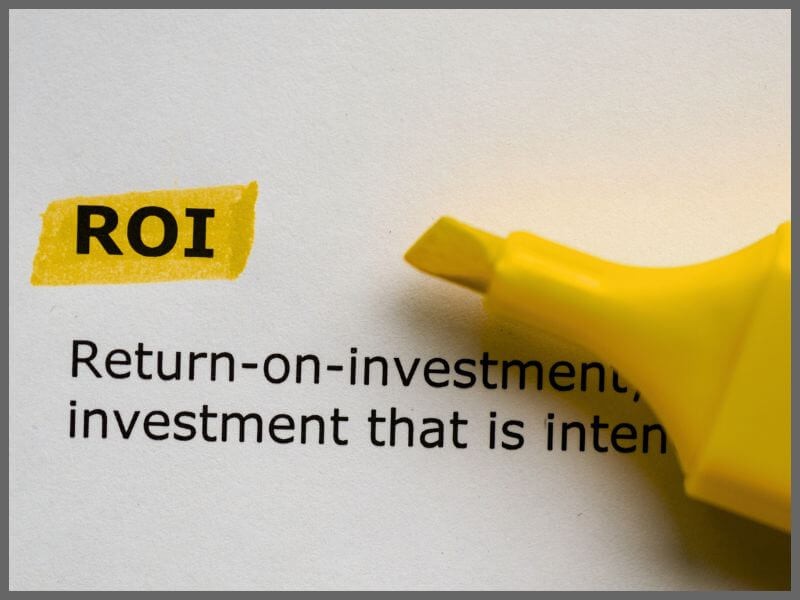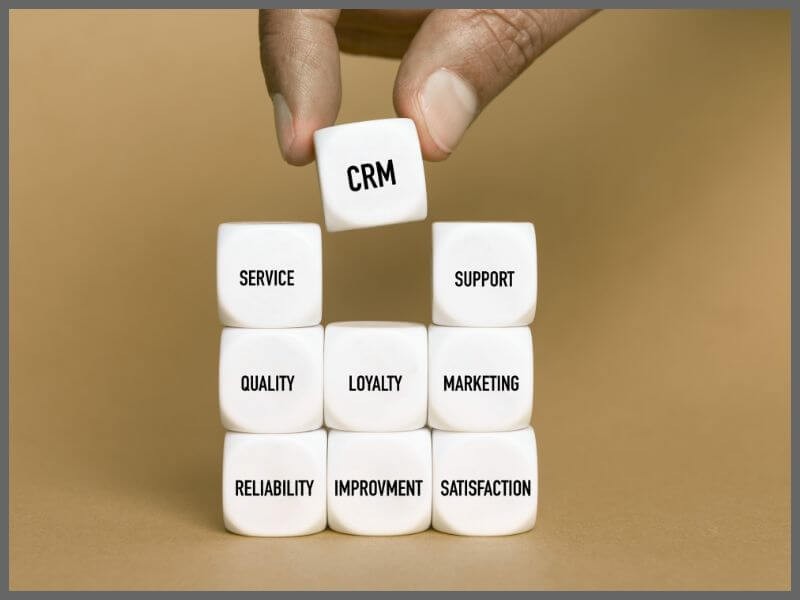
You’re spending on marketing, but don’t know if it’s paying off? ROI (Return on Investment) shows how much your ads, SEO, email campaigns, and social media bring real results. Learn how to track ROI, optimize marketing strategies, and increase business profitability. If you’re not measuring your return on investment yet, now is the right time to start.
ROI (Return on Investment) is a metric that shows how profitable your investment in marketing is. In other words, it is the ratio between the revenue generated by marketing activities and the costs invested in them.
In digital marketing, ROI helps companies better understand the effectiveness of various channels such as paid ads, SEO strategies, email campaigns, and social media.
If ROI is positive, your activities generate more revenue than costs. If it is negative, it is time to adjust your strategy to prevent losses.
ROI is not just a dry financial indicator but also serves as a guide for long-term marketing planning. Its analysis enables more precise segmentation of the target audience, a better understanding of user behavior, and the adjustment of strategies based on concrete results. Companies that continuously track ROI have the ability to respond to market changes, optimize strategies in real time, and make better decisions that increase revenue in the long run.
Without tracking ROI, marketing decisions are made randomly.
ROI provides a measurable insight into which channels deliver the best results and where resources need to be optimized.
For example, if Facebook ads have an ROI of 300% and Google Ads only 50%, the company should allocate more budget to the more successful ads. Additionally, tracking ROI allows for the analysis of the long-term profitability of strategies such as SEO, which can yield significant results but requires more time.
Moreover, ROI can help in understanding the seasonality of campaigns, identifying trends, and adjusting strategies based on real data rather than assumptions. A detailed ROI analysis helps avoid inefficient marketing tactics and improves the overall growth strategy.
Beyond just measuring financial results, ROI also helps determine the quality of potential customers (leads). If advertising attracts a large number of users but they do not convert into buyers, it is necessary to optimize the target audience and improve the user experience. A high ROI means investment in the right channels and the attraction of a relevant audience, while a low ROI suggests the need for a strategy change to improve conversions.

A simple formula for calculating ROI in marketing is:
ROI = (marketing revenue - marketing costs) / marketing costs x 100
Example: If you invested €2,000 in marketing campaigns and earned €6,000, your ROI is 200%, meaning you have tripled your initial investment.
This means that the realized profit is twice the initial investment, while the total amount (€6,000) is triple the €2,000 invested. In other words, “triple return on investment” (3x the total amount) is usually expressed as 200% ROI, precisely because ROI refers to the net profit compared to the investment, not the total balance.
However, it is important to understand that this calculation can only be accurate if all relevant costs are included.
This includes not only direct advertising costs but also all additional resources spent to make the campaign successful. Calculating ROI can be more complex in multichannel campaigns, where indirect costs and the long-term benefits of marketing activities must be considered.
In addition to the basic formula, marketing experts also use other ROI calculation methods, including:

There are several ways to track return on investment, depending on the channel you use.
Google Ads and Facebook Ads provide a detailed insight into ad costs, the number of clicks, and achieved conversions. It is important not to look only at the cost per click but also at the revenue generated through paid campaigns.
How to improve ROI for PPC:
SEO delivers long-term results, but measuring return on investment can be more challenging.
Main indicators that help in analysis include:
How to improve ROI for SEO:
Email marketing remains one of the most profitable channels in digital marketing, with an average ROI of €42 for every euro invested.
How to increase ROI for email campaigns:
Social media can deliver a significant return on investment if used correctly. However, likes and shares are not a sufficient indicator of success.
It is necessary to track:
How to increase ROI for social media:
For precise ROI measurement, it is essential to use the right tools that enable data collection and analysis of marketing activities.
Depending on the channels used in digital marketing, different tools provide insights into campaign performance, conversions, and investment profitability.
Google Analytics is one of the most important tools for tracking digital marketing.
For more accurate ROI measurement, it is recommended to set up Google Tag Manager, which allows for additional tracking of user interactions on the website.
Google Ads provides detailed data on paid ads across Google Search, YouTube, and the Display Network. This tool enables ad performance analysis, cost-per-conversion calculations, and budget optimization based on actual results.
By connecting Google Ads with Google Analytics, a more detailed insight into user behavior after clicking on an ad is obtained.
For businesses using social media for advertising, Facebook Ads Manager provides key data on campaign performance on Facebook and Instagram.
To optimize ROI, it is recommended to regularly analyze ad frequency, CTR (Click-Through Rate), and ROAS (Return on Ad Spend).

CRM (Customer Relationship Management) tools enable detailed tracking of customer relationships and the assessment of the profitability of marketing activities.
Integrating CRM with marketing tools provides a more detailed understanding of how each channel contributes to the company's overall revenue.

For those investing in organic traffic, SEO analysis tools provide a detailed insight into website performance and content effectiveness.
SEO tools help understand how organic traffic contributes to conversions and how content can be optimized for better results.

If you want to maximize return on investment, you need to optimize marketing strategies, improve user experience, adjust campaigns based on collected data, and build long-term customer relationships.
ROI does not depend only on attracting new users but also on the efficiency of the entire sales and marketing process – from the first interaction with the brand to purchase completion and customer retention.
Poor user experience can negatively impact conversions and reduce ROI, regardless of the quality of marketing campaigns. If users quickly leave the site or fail to complete desired actions, it may indicate technical or content-related issues.
How to ensure a better user experience:
Marketing automation reduces costs and increases campaign efficiency, enabling businesses to reach the right audience at the right time with minimal manual effort. By applying automation, ROI can be improved without increasing the budget.
How to implement automation in marketing:
Marketing strategies should not be static. The digital environment is constantly changing, and user behavior can vary depending on trends, seasonality, and competition.
How to ensure campaigns deliver maximum ROI:
Acquiring new customers is crucial for business growth, but long-term relationships with existing customers generate significantly higher ROI. Loyal customers typically spend more, are more likely to give referrals, and are cheaper to re-engage than acquiring new clients.
How to increase the value of long-term customers:
Tracking ROI is not just a number on paper – it enables informed decision-making and directs marketing investments toward strategies that deliver real results. Without a clear analysis of return on investment, the budget can be spent on ineffective campaigns while more profitable channels remain overlooked.
If you are not yet tracking the ROI of your marketing activities, now is the right time - what is not measured cannot be improved.
Maximize Your ROI with Zona Plus.
Don’t waste your budget on campaigns without clear results. We help you track, analyze, and optimize marketing activities to achieve a higher return on investment and increase profitability.
It’s time for every euro invested to bring real value. Contact us today and find out how to improve the ROI of your campaigns.